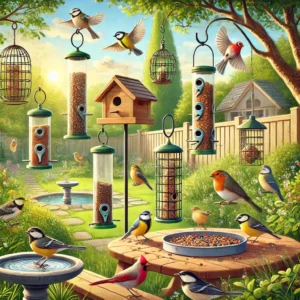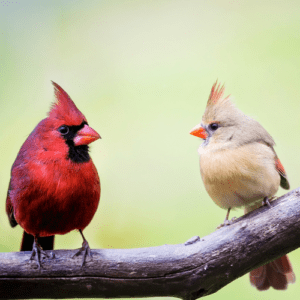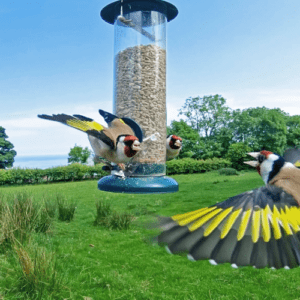It took me an embarrassing amount of time to figure this out. I remember the first time I confidently pointed at a bird and said, “That’s a Downy Woodpecker.” I was so sure. I had read the guides. I had studied the pictures. I had even held up my phone with a bird ID app to compare.
And then my friend, a more experienced birder, just casually went:
“Nope, that’s a Hairy.”
Excuse me? What do you mean, that’s a Hairy?!
If you’re here, I’m guessing you’ve also gone down the “Downy vs. Hairy Woodpecker” spiral and are still frustratingly unsure about who’s who. Don’t worry—I’ve been there. But I promise, once you see the differences, you can’t unsee them.
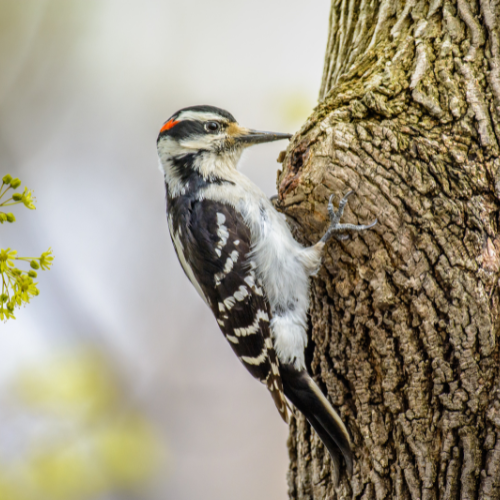
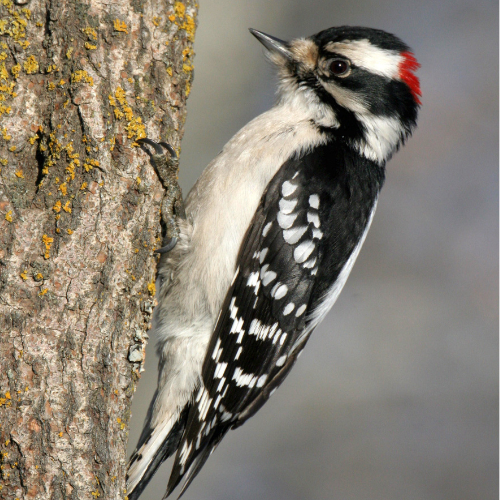
Spotting the Differences: Downy vs. Hairy Woodpecker
First of All, Forget About Size
I don’t know who decided “size” was the main way to tell these two apart, but I’d like to have a word.
Look, in theory:
Downy Woodpecker → Small, sparrow-sized (~6 inches).
Hairy Woodpecker → Noticeably bigger, closer to a robin (~9-10 inches).
Sounds easy, right? Nope.
Because when you’re looking at just one bird, how do you know if it’s a small Hairy or a large Downy? You don’t. Your brain will lie to you. I have eyewitness evidence (aka me, being wrong repeatedly).
So, let’s talk about what actually works.
The Beak Trick That Finally Made It Click
This is the ONLY thing that stopped me from second-guessing myself every time:
Downy Woodpecker → Short, stumpy beak—about ⅓ the length of its head.
Hairy Woodpecker → Long, serious, no-nonsense beak—almost as long as its whole head.
This was a total lightbulb moment for me. I cannot emphasize enough how painfully obvious the difference is once you start looking at beaks first.
Cornell Lab of Ornithology also agrees that the beak is the best way to tell them apart.
The Weird Tail Feather Test (If You Like Extra Credit)
Okay, let’s say the beak isn’t super visible. You’re still squinting, and the bird is refusing to cooperate.
Look at the tail feathers:
Downy Woodpecker → Has little black spots on the outer tail feathers.
Hairy Woodpecker → Pure white outer tail feathers—no spots at all.
It’s one of those things that doesn’t seem useful until you actually start noticing it—and then? Boom. It’s the second-best clue after the beak.
Audubon backs this up—they say tail feather markings are a great way to tell them apart.
How to Actually Get Woodpeckers to Show Up
Because let’s be real: what’s the point of identifying them if they won’t even visit your backyard?
Suet: The Woodpecker Party Snack
The first time I put out suet, I had woodpeckers within a couple of days. That was great.
Best store-bought suet → Look for ones with nuts & berries—variety is key.
DIY suet → Melt beef fat, mix in seeds, and let it harden. Warning: Your kitchen will smell like an abandoned meat factory.
Peanuts = Downy Woodpecker Bait
For some reason, Downy Woodpeckers are peanut junkies. I added peanuts to my feeder on a whim, and suddenly, it was like I had opened a Downy-exclusive nightclub. If you want to bring them in, peanuts are a solid bet.
Black Oil Sunflower Seeds = The Lazy Birder’s Best Friend
If you want one food that literally every bird (and let’s be honest, every squirrel) will eat? Black oil sunflower seeds. Just be prepared to refill your feeder a lot.
Woodpecker-Friendly Habitat Tips
Food is one thing, but if you really want woodpeckers to stick around, there’s more you can do.
Leave Dead Trees Alone
Woodpeckers love dead trees because they’re packed with insects. If you can safely leave one up, it’s like free woodpecker housing.
If that’s not an option, even just adding some logs or branches around can help.
Water Sources Help More Than You’d Think
They might not take long baths like robins, but they do need fresh water. A birdbath works, but if you want to go the extra mile, get one with moving water a small fountain, or a dripper. Birds love moving water.
Lay Off the Pesticides
Woodpeckers eat insects.
Pesticides kill insects.
So, if you want more woodpeckers, skipping the chemicals makes a difference.
Final Thoughts: If You’re Still Struggling, Just Do This
1. Ignore size. Your brain will deceive you.
2. Check the beak. If it’s short? Downy. If it’s long? Hairy.
3. Look at the tail spots. (If you have patience.)
That’s it. No more guessing.
And if you confidently ID a Hairy for the first time? You will feel like a genius.
Now go forth, stare at your feeders, and let me know if this finally helped.
Common Questions About Downy vs. Hairy Woodpeckers
Q: Do Downy and Hairy Woodpeckers get along? A: Yep! They usually take turns at the feeder rather than fighting. Downies seem more outgoing, while Hairies have more of a “drop in when I feel like it” vibe.
Q: Can I attract a Pileated Woodpecker too? A: Maybe! Pileated Woodpeckers are way bigger and prefer dense woods, but they will show up if you’re in the right area. Suet is your best bet.
Q: What if they start pecking my house? A: Been there.
If they start hammering at

